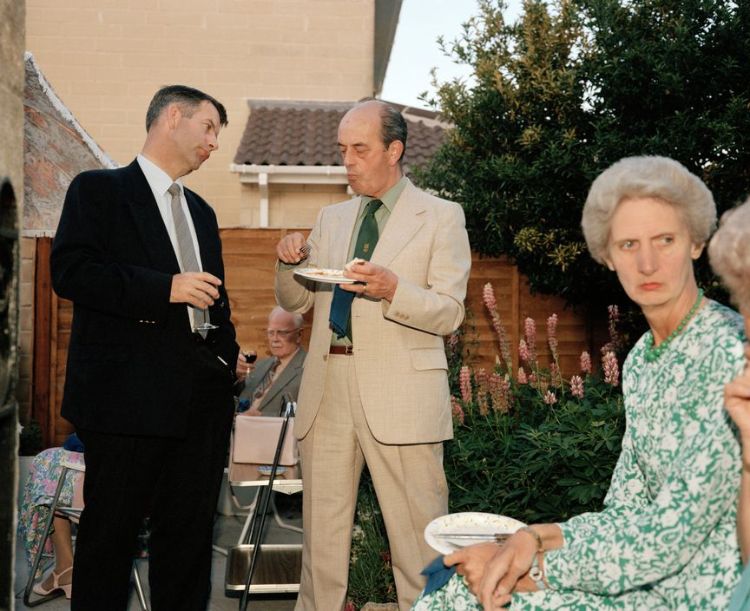Martin Parr’s documentary series, The Cost of Living (1986-1988), captures a portrait of a particular strata of British society at the height of Thatcherism. From Poll Tax riots to strikes over the closure of mines, 1980’s Britain was a time of political unrest and social anxiety. Believing in the responsibility of the individual, many of the policies introduced under Margaret Thatcher stretched the gap between the upper and lower classes and resulted in divided communities. The Cost of Living is a satirical series which presents another view of Britain in the 1980’s, away from the tensions of riots, strikes and unemployment.
As in much of Parr’s work, the series pictures candid, satirical and often mundane scenes, rendered in vivid and unflinching colour. A photographic essay on the rise of the middle class, as they became wealthier under Thatcher’s government in the 1980’s, Parr’s series coined the term ‘comfortable classes’. The photographs investigate a new type of aspirational living, and the associated rituals, habits and absurdities of this upwardly mobile class. The series documents suburban garden parties, private views, a meeting of the young Conservative club, and fundraising lunches.
The Cost of Living comments on a type of social gentrification. A photograph in the series ironically titled Conservative “Midsummer Madness” Party, Bath, Avon captures two men formally dressed at a function. One gentleman is pictured mid sentence, perhaps with a mouthful of cake, the other appears to be listening unamused. Others of an older generation sit around them having seemingly similar conversations, brows furrowed and lips pursed. There is a sense of duty in both this particular image and, more widely, the title of the series; The Cost of Living. The series captures slipping social facades and the realities of ‘keeping up appearances’, exposing the drinks spilt down satin dresses and bored, distant expressions
(By Flora Miller)
